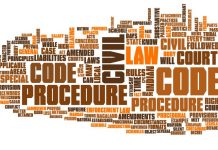This article is written by Anisha Bhandari, from the Institute of Law, Nirma University. This article emphasizes on the importance of jurisprudence along with the challenges posed within a democracy.
Table of Contents
Introduction
How has intersectional discrimination been excluded from the scope of Article 15 of the Indian Constitution to date in the world’s largest democracy, which is often recognized for its “diversity”? The goal is to review the jurisprudence surrounding the meaning of clause (1), in particular the expression ‘just on grounds of religion, race, caste, age, place of birth or all of them’ (emphasis added) and whether it accepts intersectionality. This is the product of two investigations: first, how the case law on discrimination in relation to Article 15 foreclosed the course to acceptance to intersectional discrimination; and, secondly, how Article 15(1) may be re-imagined to tackle intersectional discrimination.
Background
In ancient India, not only was there an enormous development in mathematics, astronomy, medicine, grammar, philosophy, literature, etc., but there was also an enormous development in law. This is evident from the large number of legal treaties written in ancient India (all in Sanskrit). Only a relatively limited fraction of this overall legal literature endured the destruction of time, but even what has endured is quite big. It is claimed that all Hindu rule emerged in the Vedas (also called Shruti). However, in reality, this is a myth, and in truth, the Hindu rule actually emanated from the books named Smritis e.g. Manusmriti, Yajnavalkya Smiriti, and Smritis Vishnu, Narad, Parashar, Apastamba, Vashisht, Gautam, etc. Such Smirits were not legislation created by a government or a senate. They were books that were published by any Sanskrit scholars in ancient times who had expertise in practice. All the law was originally customary, and there was no statutory law in ancient India, for the simple reason that there was no parliament or legislature at that time. The traditional question, however, was that it was always unclear and ambiguous and did not go into depth. The customary rules could, of course, tell us that when a man dies his property he should go to his son. But what would happen if there were no son and the deceased left behind just a few connections distantly connected to him, e.g. second cousins, grandnephews, aunts, etc?
Federal Balance
There seems to be a change in the fragile regional equilibrium between the Centre and the States, with the new Union Government possessing a significant number of representatives of the Parliament. There is increasing fear that the Center is working aggressively to govern the opposition-ruled states through the ‘Lieutenant Governor’ agency. The Center shall nominate a Lieutenant Governor or LG as the Head of the Constitution of a State (or Union Territory) which exercises discretionary powers. The use of legislative control, held by the Government of the Union, has the ability to undermine the institutional equilibrium.
The case brought into dispute by the LG institution was the Government of NCT of Delhi v UOI case. In so far as a democratic government is a core function of the role of the governor, the Court maintained that the LG was not the executive director of Delhi. Rather, it held that the Chief Minister and the Council of Ministers were in charge of the executive. It explained that the LG, which is an agent appointed by the Government, is guided by the advice of the Chief Minister and, furthermore, that the LG does not have any autonomous powers under the Constitution. The Court also observed that, when two interpretations of the textual clause are appropriate, an interpretation which furthers representative democracy should be granted primacy in the Constitution.
Even though the main problem of who is the administrative director of the Delhi Government is now decided, more concerns on who leads the Utilities and the Anti-Corruption Agency and who has the authority to set up public office inquiries are yet to be thoroughly answered. It is attributable to the fact that, in this situation, the 5-court bench deals with the substantive issue of who leads the Delhi Government, and particular issues were transferred to the smaller benches. However, in 2018, the Court played an important role in reinforcing the concept of cooperative federalism by restricting the extent of the intervention of the Center and regulating the power of the LG.
Religion with gender equality
Through judgment 4:1 of the Supreme Court in Indian Young Lawyers Association v. State of Kerala, in checking religious practice over decades against the ideals of gender equality, the Supreme Court ruled that Sabarimala’s religious tradition, which forbids women from joining the Temple in their reproductive years, contradicts the basic rights granted to women under the Constitution. Justice Indu Malhotra’s dissent also posed concerns regarding the degree to which existing religious traditions may be questioned on the notion of equality. The fight is already continuing because more than 50 review petitions for consideration are yet to be determined. Four months after the verdict, there is still little enforceability of the decision, with only two people able to join the temple. This chips away from the authority of the Supreme Court if it is powerless to enforce its judgment in the face of political protests. Clearly, it is the troika of reasoning, outcome, and enforceability that together gives the Supreme Court legitimacy as the final arbiter of the law.
Article 15
As the basic constitutional text on non-discrimination, it is important to locate intersectionality, in particular within the meaning of Article 15(1), rather than the right to equality under Article 14, since the latter is still fundamental and complementary. Efforts are therefore made to delineate the distinct contribution of the non-discrimination guarantee, which is incorporated in Article 15(1), which, in turn, is crucial in addressing intersectional discrimination. This redefined focus on Article 15(1) gives a clearer understanding of discrimination, whether intersectional or otherwise.
It is useful to set out the point of reference for intersectional discrimination. Intersectional prejudice is a relational means of referencing the abstract notion of multi-stakeholder prejudice. This qualitative understanding is relevant to the extent that it explains the alternative to rejecting the limited quantitative view of Article 15(1) as prohibiting discrimination on a single ground only. Intersectionality theory understands identity as a result of unique and shared characteristics of intersections such as race, sex, gender, disability, class, age, caste, religion, sexual orientation, region, etc. Intersectionality arose as the concrete and legal implementation of the intellectual interpretation of black women ‘s cultures, defined by color, class, and gender. The perceptions of black women were seen as characterized by the convergence of blackness and femininity; which indicated that they shared some of the experiences of oppression with white women and black males, but often represented the special realities of being both black and female. The recognition of both the special and common aspects of the backgrounds of black women of race and sex has defined the intersectionality of the rule on discrimination.
Citizenship Amendment Act , 2019
CAA has been in the news for almost two months now, and it’s still hogging media today. Protests, both against and in support of the legislation, have erupted throughout the country, with Shaheen Bagh in South Delhi being an emblematic protest. The Constitution and the Preamble are two words that would contend to be the words of the nation in the last two months. It is a pity that understanding these words is limited to shouting ‘right to protest’ and ‘freedom of expression.’
There is no reference to the responsibilities inherent in the exercise of these rights. Many who demonstrate, and those who help them, have no qualms if the rights of others are trampled upon or when demands are made to split up the country. One of the key claims of those protesting against CAA is that it is against Article 14 of the Constitution which concerns the fundamental right to equality. That is because lawmakers must still enforce these laws on the grounds of either what the public wants to know or what the legislators want them to think. That, though incorrect, is less risky than when educated people, who themselves have become members of the nation’s judiciary and law-enforcement committees, come up with lop-sided definitions. In an article in a leading national newspaper, a former member of the judiciary claimed that CAA breached Article 14 on all three counts of fair registration, unconstitutional intervention by the state, and unfair treatment of individuals without justification. The CAA is not reasonable, as it does not cover Muslim minorities such as Ahmadiyyas, Hazaras, and Shias. It is arbitrary, as it applies restrictively to only three Islamic countries in our neighborhood. Inequality in treatment stems from the view that religion is a condition of the Indian government’s entitlement to protection. If one delves a little deeper into what has been said, it becomes clear that the learned judge is wrong in all three respects.
The reality that the Indian Constitution refers to Indian people and by no way should be applicable to anybody who is not a resident of the country. Many given or qualified to apply for Indian citizenship under the CAA are not citizens of India as of the year. And how would the Government of India be suspected of handling such non-citizens in an unfair or unjust manner? This is also evident from Article 14 that all laws in the country can not be common. There will be a need for laws that are selectively applicable in a diversified society like India. To that effect, Article 14 does not preclude the registration by the legislature of individuals, artifacts, or transactions for particular purposes.
Have the anti-CAA demonstrations really been non-violent? One would have to be very arrogant to think that. The loss of public properties has taken place, both demonstrators and policemen have been wounded, and there have been conflicts between pro and anti-CAA protesters. These are growing types of aggression. There have also been other forms of violence in the current protests. Incendiary speeches to incite people to violence, slogans that coax people to kill leaders or break the nation, poisoning the minds of young children who have yet to step in their teens to kill the Prime Minister of the nation and shoot the police, staging school games with anti-national sentiments and dialogs aimed at degrading national leaders – are these not forms of violence? Yet that’s not half of it. Shaheen Bagh’s agitation has been creating trouble for the lakhs of commuters on a regular basis over the last seven weeks. Protesting university students forcefully prevent others from registering for examinations and to the extent that they destroy the university’s networking systems to cripple the institution. The question here is not whether citizens have the right to protest. They’ve certainly got that right. Yet no country or legislation will authorize non-violent demonstrations or demonstrations that keep millions of non-protest people to ransom.
Conclusion
The legislation mentioned above, is the primary source of legislation in modern times. Legislation, by its own definition, brings in sudden shifts in societal interactions at a given moment. It is in direct contrast to the customary practice, which has developed quite steadily through the years without a sudden and rapid break from the past. As every major technical advance in modern industrial society brings about a change in social relations, it calls for new legal norms, which are not possible due to slow normal growth. Legislation has, therefore, become the most important source of law in modern society. However, as the sociological jurists have pointed out, there have often been gaps in the legislation, and the legislation has also not always kept pace with the pace of social development due to technological advancement.
In certain circumstances, the required judge made the law necessary to fill these gaps. Therefore, it can be claimed that contemporary industrial jurisprudence, though primarily positivist in that it depends mostly on legislation, still incorporates the concepts of sociological jurisprudence by supplementing legislation if there is a legal void or where there is a convincing social need. This often incorporates other principles of common law, such as the laws of natural justice (when there is no formal rule). Therefore, while ancient Indian jurisprudence may be assumed to belong to the historical tradition of jurisprudence, contemporary jurisprudence is a mixture of positivism, sociological jurisprudence, and natural law.
LawSikho has created a telegram group for exchanging legal knowledge, referrals and various opportunities. You can click on this link and join:
 Serato DJ Crack 2025Serato DJ PRO Crack
Serato DJ Crack 2025Serato DJ PRO Crack











 Allow notifications
Allow notifications



